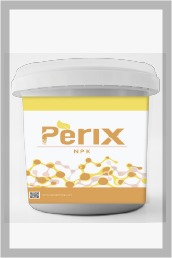- 58 B, 33rd Street, El-Shoueifat - 3rd Floor - Fifth Settlement - New Cairo
- Info@agroplexeg.com
- 201150999199+

PIREX [NPK]
Features:
- A group of fertilizers with low usage rates and high solubility rates in water. They are the product of individual chemical reactions such as (urea, potassium sulfate, ammonium sulfate).
- It is produced in the form of flakes to ensure the stability of the physical state of the final products, as its distinctive contents and properties
The unique chemistry makes it physically unstable after reactions except in the form of flakes 100% soluble in water, and this is one of the most important indications of its difference from soluble fertilizers in the form of powder or crystal.
Benefits:
Ascophyllum nodosum
- Pure and free of chlorine and sodium, in addition to being free of heavy metals.
- It is available in several formulations that suit all stages of crop and tree growth, which makes it easy to rely on its products in fertilization programs for most crops.
- Suitable for all types of soil, especially saline or alkaline soils. It also treats the alkalinity of irrigation water and reduces the negative effects of water salinity.
- It has a fast effect and distinctive results because it can be easily absorbed by the roots and leaves, and its elements remain dissolved at the lowest level of moisture in the soil or on the leaves.
- It contains specialized additives and enhancers in addition to being distinguished in its basic components, which makes it suitable for all agricultural seasons and seasons of the year.
- Economical and safe fertilizers if used according to recommendations and instructions.
Usage rates:
- – Soil fertilization 1.25-2.0 kg/acre or plastic house
- – Pivot spraying 5-6 kg / 1000 liters of water
- – Foliar spray 1.5-2.0 kg / 1000 liters of water
Composition:
- Birks 8-5-20
Birks 18-17-16
Frequency and addition rate: 1-2 times a week or according to need and weather conditions.
Mixing with pesticides:
It is recommended to conduct a test before mixing it with any pesticide and to take into account the weather conditions and soil moisture when spraying, with the recommendation not to generalize the mixture like any pesticide before conducting a field experiment on a small part of the plant or crop.
Mix with fertilizers:
Do not mix with ammonium compounds, calcium, humic acid, seaweed, or alkaline or acidic compounds.
